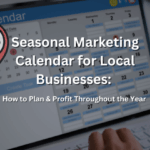SEO is a huge field and it is very easy to get caught up in the minutia of factors which play into Google’s algorithms. Often times the essential basics get eclipsed by new tricks or hacks. Let’s look over some of the key and stable guidelines that all sites should follow for good SEO.
1. Website should be readable by Google
You would think in this day and age we’d already have this one taped.
Have you seen ads on Google or Youtube for websites built by ‘wix’? Their video shows how super simple it is to use their service to whip up a beautiful and smooth looking website.
But lo and behold… these websites are NOT visible to Google! Their source code is obfuscated and any of the page’s text will not be readable to Google. Result: garbage SEO rankings.
This is why one should NOT use these automated website creation tools, and why one should use Clear Imaging. We create all our websites from scratch and our code is always visible to Google.
2. Website should use hierarchical heading tags
A page should have one H1 tag for the page itself. It should then have H3 tags for each paragraph or so. And for any large sections of the page (groups of paragraphs, each with their own H3) you could have an H2 tag for each section.
An H2 shouldn’t go after every paragraph.
You could have more than one H1 per page, if the topics were broad enough.
It is important to keep it focused.
3. Web pages should have at least 300 words
You don’t want your page’s to have under 300 words, as it makes the page just seem unimportant. The more text the better. Aim for 500 as your minimum. Pages should be unique (all have different text) and should be written for the purpose of helping the user, not written for the purpose of showing keywords to Google.
4. Website should have more than 5 pages
If content is ‘king’ it will be hard to follow that mandate if your site only has 5 pages. You need to expand out and grow your site. There is a myriad of content types you can use in order to create more pages. Such as: news, testimonials, projects/portfolio, reviews, DIY guides, etc. Make your website more valuable and really have something to offer, in the way of information, and not just be an online business card.
5. A page should have a simple title tag
There should be just a few words; your main keyword phrase. It should not be stuffed with a long string of keywords, phrases and cities. Just because the Google will read up to 50-60 characters in the title tag that does NOT mean that you should stuff the title tag to 60 characters. This dilutes the message of your page and makes you look spammy. Keep it simple and focused.






